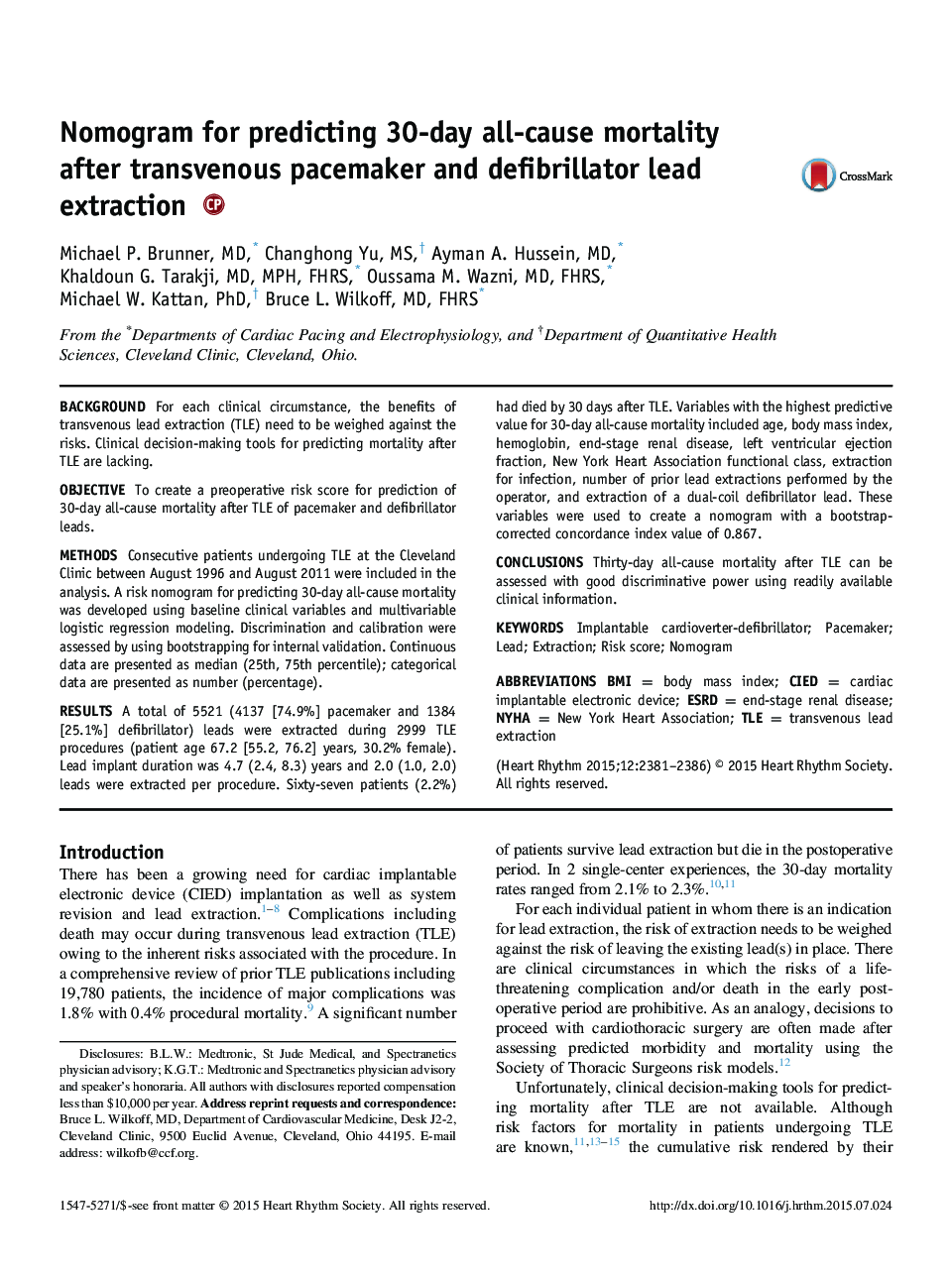| Article ID | Journal | Published Year | Pages | File Type |
|---|---|---|---|---|
| 2921793 | Heart Rhythm | 2015 | 6 Pages |
BackgroundFor each clinical circumstance, the benefits of transvenous lead extraction (TLE) need to be weighed against the risks. Clinical decision-making tools for predicting mortality after TLE are lacking.ObjectiveTo create a preoperative risk score for prediction of 30-day all-cause mortality after TLE of pacemaker and defibrillator leads.MethodsConsecutive patients undergoing TLE at the Cleveland Clinic between August 1996 and August 2011 were included in the analysis. A risk nomogram for predicting 30-day all-cause mortality was developed using baseline clinical variables and multivariable logistic regression modeling. Discrimination and calibration were assessed by using bootstrapping for internal validation. Continuous data are presented as median (25th, 75th percentile); categorical data are presented as number (percentage).ResultsA total of 5521 (4137 [74.9%] pacemaker and 1384 [25.1%] defibrillator) leads were extracted during 2999 TLE procedures (patient age 67.2 [55.2, 76.2] years, 30.2% female). Lead implant duration was 4.7 (2.4, 8.3) years and 2.0 (1.0, 2.0) leads were extracted per procedure. Sixty-seven patients (2.2%) had died by 30 days after TLE. Variables with the highest predictive value for 30-day all-cause mortality included age, body mass index, hemoglobin, end-stage renal disease, left ventricular ejection fraction, New York Heart Association functional class, extraction for infection, number of prior lead extractions performed by the operator, and extraction of a dual-coil defibrillator lead. These variables were used to create a nomogram with a bootstrap-corrected concordance index value of 0.867.ConclusionsThirty-day all-cause mortality after TLE can be assessed with good discriminative power using readily available clinical information.
